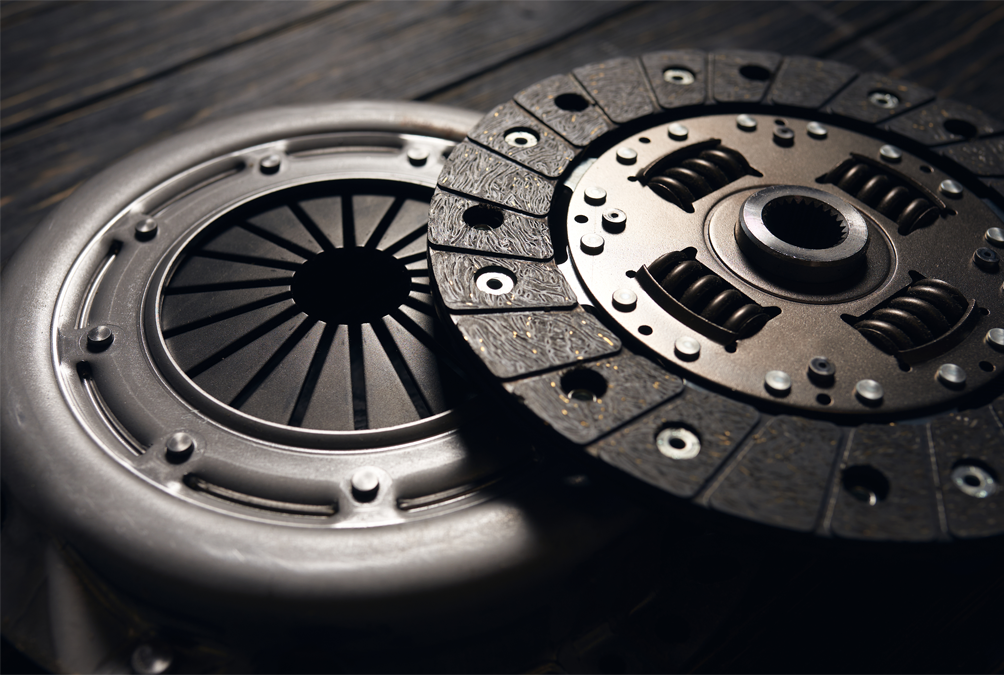The Clutch Plate - Understanding Its Importance and How It Works
As a car owner or driver, have you ever wondered what makes your vehicle change gears so smoothly? The answer lies in the clutch plate - a small but vital component of the clutch system that allows you to shift gears with ease. In this article, we'll dive into the workings of the clutch plate, its importance, and how it functions.
What is a Clutch Plate?
The clutch plate, also known as the friction plate, is a circular steel plate with friction material on both sides. It sits between the engine flywheel and the transmission input shaft and is sandwiched between the pressure plate and the flywheel. Its primary purpose is to transfer power from the engine to the transmission while allowing the driver to change gears without grinding the gears or stalling the engine.
The Importance of the Clutch Plate
Without the clutch plate, changing gears in a manual transmission vehicle would be impossible. It is the clutch plate's job to engage and disengage the transmission from the engine, allowing the gears to be changed smoothly. The clutch plate does this by using friction to grip the flywheel, which is connected to the engine, and the pressure plate, which is connected to the transmission.
If the clutch plate is worn or damaged, it can cause a range of issues, including slipping, grinding, and difficulty shifting gears. This can not only be frustrating for the driver, but it can also cause damage to the transmission and engine over time. That's why it's essential to ensure that the clutch plate is in good condition and to have it replaced if necessary.
How Does the Clutch Plate Work?
To understand how the clutch plate works, we need to look at the clutch system as a whole. The clutch system consists of several components, including the clutch pedal, master cylinder, slave cylinder, release bearing, pressure plate, and flywheel.
When the driver presses the clutch pedal, it activates the master cylinder, which sends hydraulic fluid to the slave cylinder. The slave cylinder then pushes on the release bearing, which in turn pushes on the pressure plate. The pressure plate releases the clutch plate, allowing it to disengage from the flywheel.
With the clutch plate disengaged, the engine's power is no longer being transmitted to the transmission, and the driver can change gears. When the driver releases the clutch pedal, the pressure plate pushes on the clutch plate, forcing it to engage with the flywheel. This re-engages the engine's power with the transmission, allowing the vehicle to move.
Factors Affecting Clutch Plate Life
The lifespan of a clutch plate depends on several factors, including driving style, vehicle type, and quality of parts. Aggressive driving, such as constant stop-and-go traffic, can put additional stress on the clutch plate, causing it to wear out faster.
The weight and power of the vehicle also play a role in clutch plate lifespan. A heavier vehicle with more power will put more strain on the clutch system, causing it to wear out faster. It's also essential to use high-quality clutch parts to ensure longevity and performance.
Signs of a Worn Clutch Plate
Over time, the clutch plate will wear out and need to be replaced. Here are some signs that your clutch plate may be worn and in need of replacement:
Slipping: If the clutch plate is worn, it may slip, causing the engine to rev without transferring power to the transmission.
Difficulty Shifting Gears: A worn clutch plate can also make it challenging to shift gears, causing grinding or difficulty getting into gear.
Burning Smell: If the clutch plate is slipping, it can cause friction, which can produce a burning smell.
Vibration: A worn clutch plate can cause the vehicle to vibrate or shake when driving, especially when accelerating from a stop.
If you notice any of these signs, it's important to have your clutch system inspected by a qualified mechanic. Ignoring these signs can lead to further damage to the transmission and engine, which can be costly to repair.
Replacing a Clutch Plate
Replacing a clutch plate is not a simple task and requires specialized tools and knowledge. It's recommended to have a qualified mechanic perform the replacement. The process involves removing the transmission and flywheel to access the clutch plate.
Once the clutch plate is removed, the flywheel and pressure plate should be inspected for damage or wear. It's also essential to replace the release bearing and pilot bearing while the clutch system is apart.
After replacing the clutch plate, the transmission and flywheel are reinstalled, and the clutch system is bled to remove any air in the hydraulic lines. It's important to break in a new clutch plate gently, avoiding heavy acceleration or aggressive driving for the first few hundred miles.
The clutch plate may be a small component of the clutch system, but it plays a vital role in the smooth operation of a manual transmission vehicle. Understanding how the clutch plate works and its importance can help you identify and address any issues before they lead to more severe problems. Regular maintenance and proper driving habits can help prolong the life of the clutch plate and ensure a smooth driving experience.
In summary, the clutch plate is a small but essential component of a manual transmission vehicle. Its primary purpose is to engage and disengage the transmission from the engine, allowing the driver to change gears smoothly. The lifespan of a clutch plate depends on several factors, including driving style, vehicle type, and quality of parts. If you notice any signs of a worn clutch plate, it's important to have it inspected and replaced by a qualified mechanic. Understanding how the clutch plate works and its importance can help you maintain your vehicle's clutch system and prolong its lifespan.
Labels: automobile, Interesting, Technology


0 Comments:
Post a Comment
Subscribe to Post Comments [Atom]
<< Home